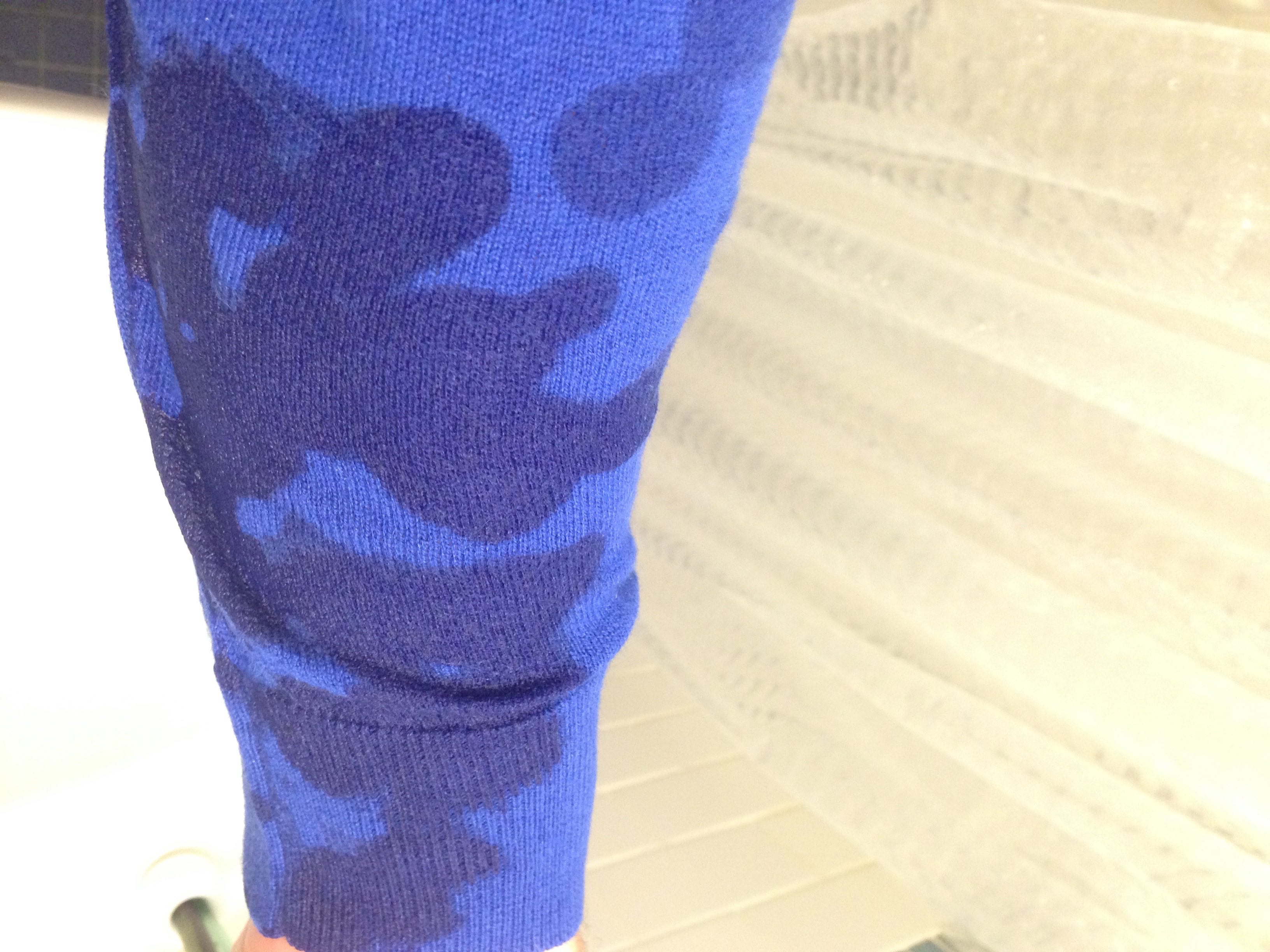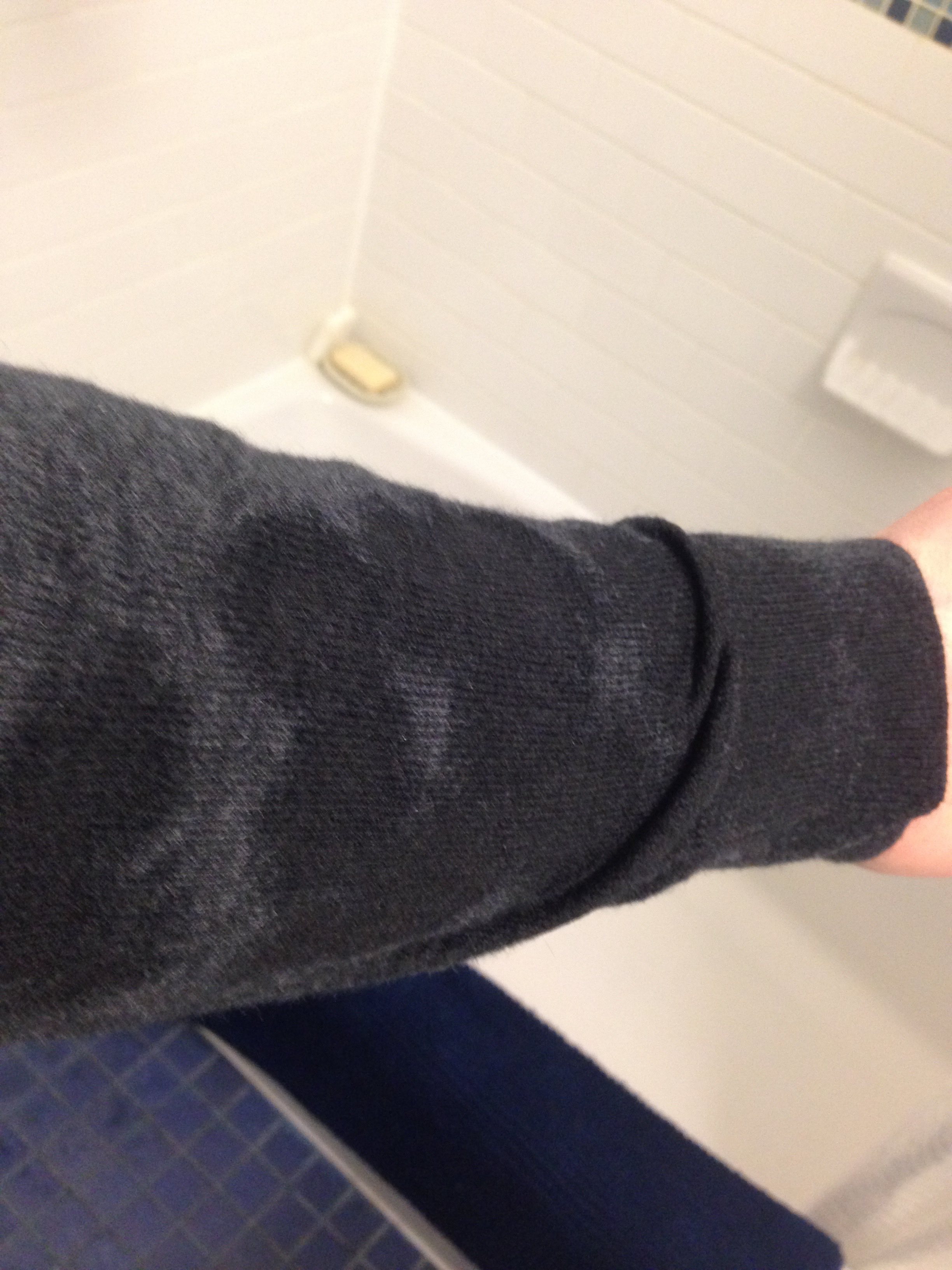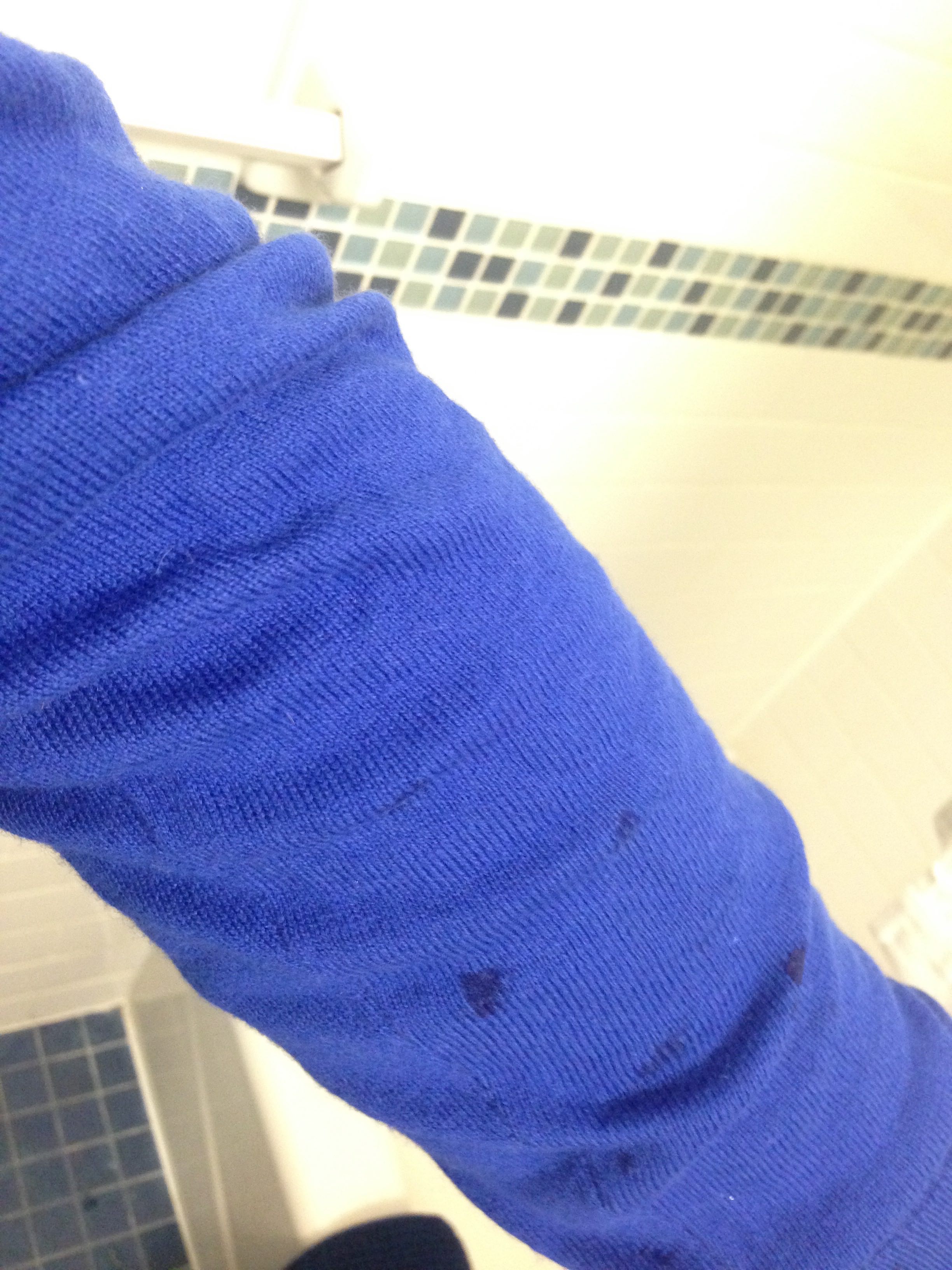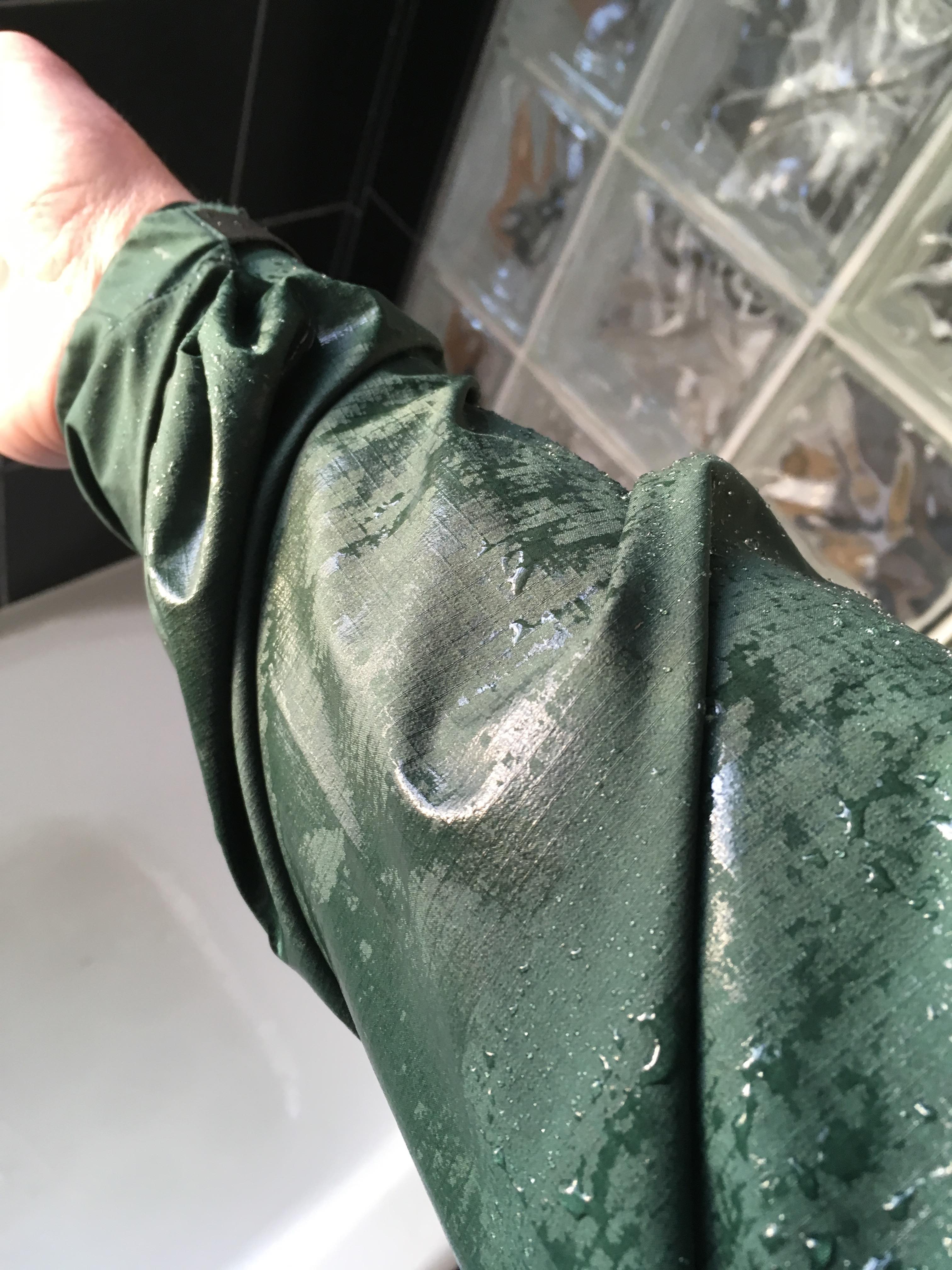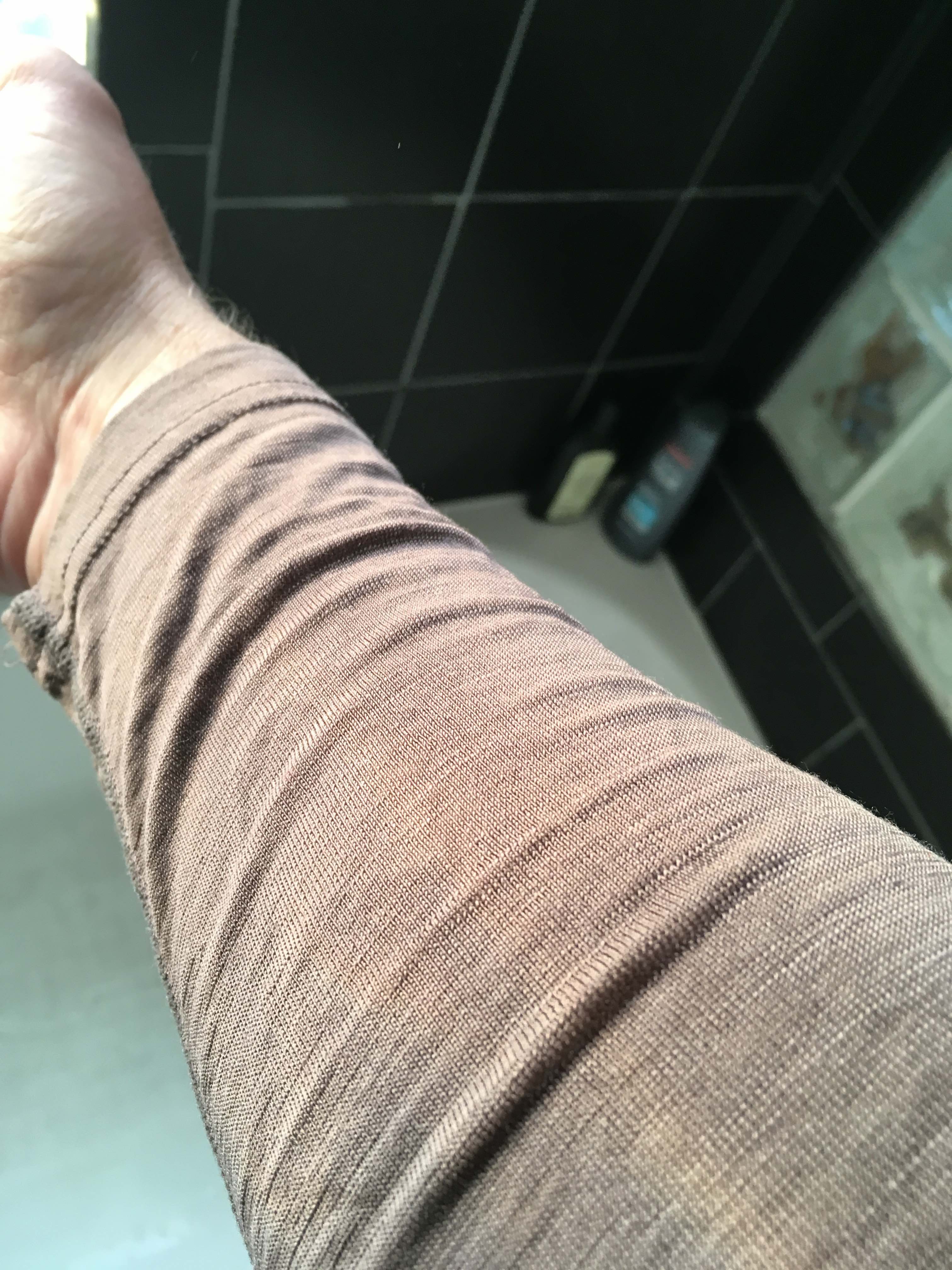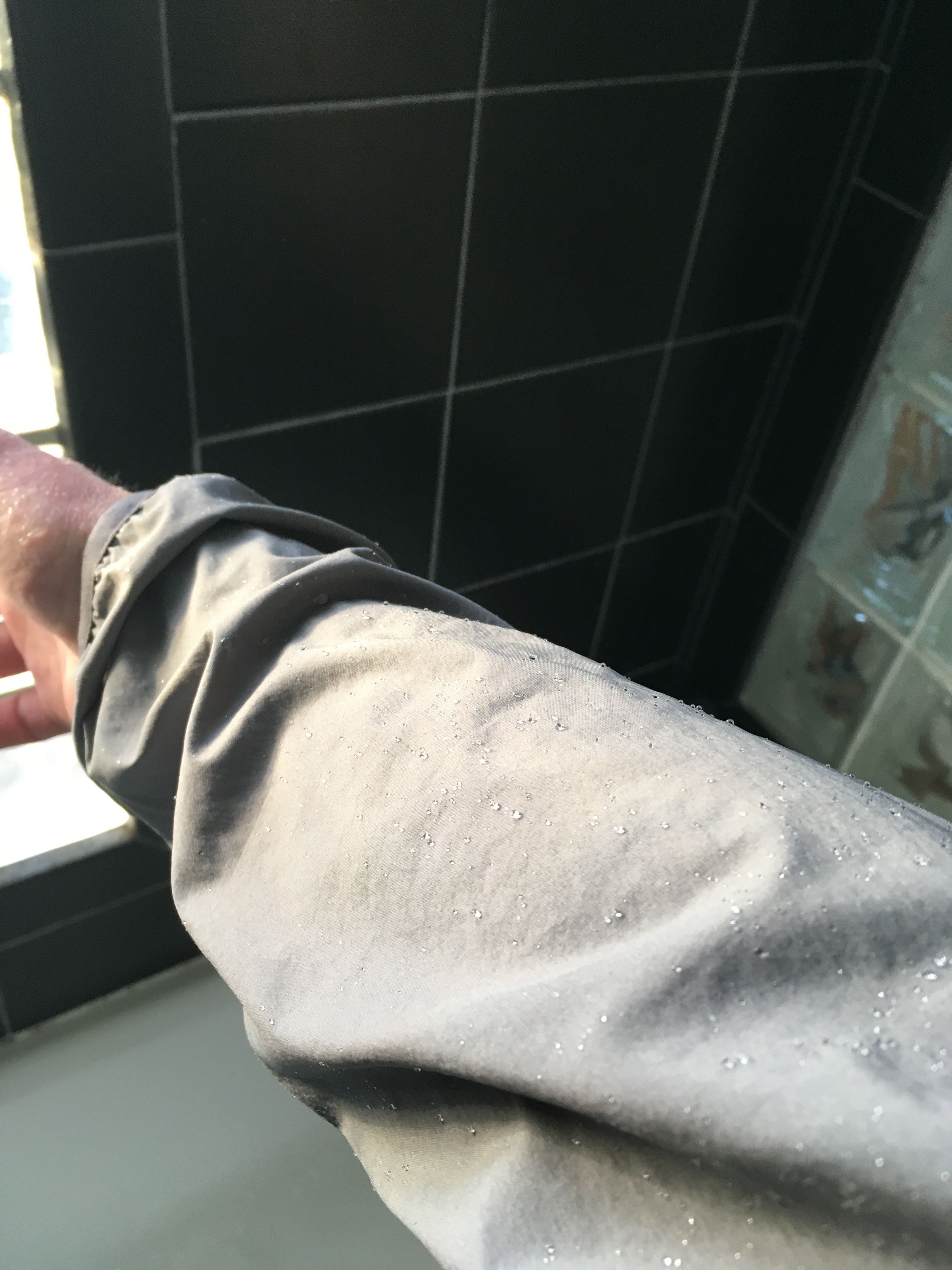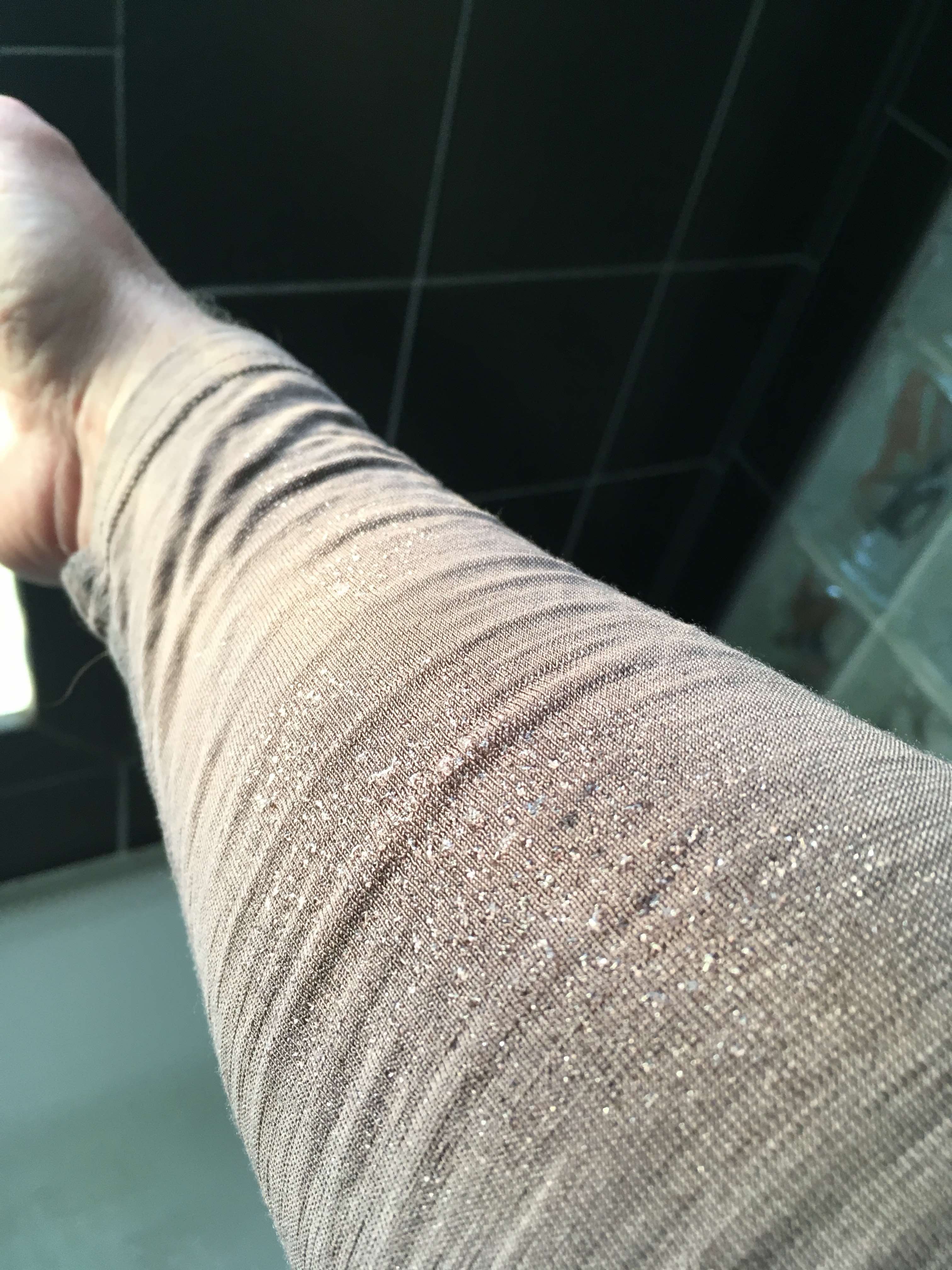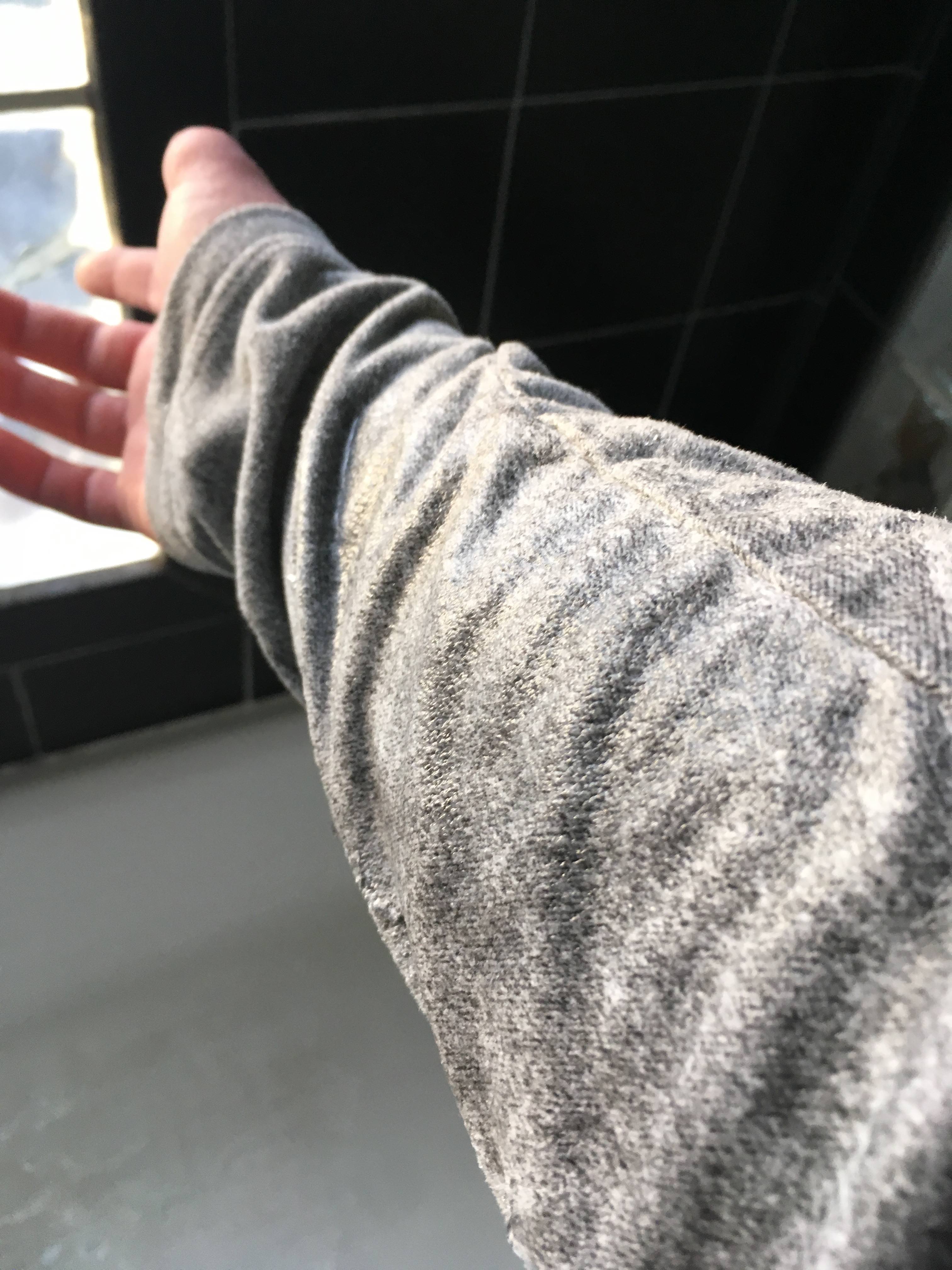Topic
A good alternative to WPB gear for ACTIVE backpacking
Forum Posting
A Membership is required to post in the forums. Login or become a member to post in the member forums!
Home › Forums › Gear Forums › Gear (General) › A good alternative to WPB gear for ACTIVE backpacking
- This topic has 367 replies, 46 voices, and was last updated 5 years, 12 months ago by
 Stumphges.
Stumphges.
-
AuthorPosts
-
Sep 11, 2018 at 5:14 pm #3555465
I don’t think EPIC was ever en vogue so it never fell :). Personally, when I am highly active in colder rain, I have been been most comfortable using a highly wicking base (like Patagonia Thermal Weight Capilene) with a shell made from EPIC (for me, a Patagonia Essenshell I used 2002-2017) which is a light weight version of the classic British soft-shell system like the Buffalo Mountain Shirt. It’s about the micro climate and ease of drying. This has never caught on because you have to stay active and it takes some experience / thoughtfulness to make it work which people aren’t always willing to do.
On top of that, the outdoor industry keeps encouraging us to look for the magic jacket which is sufficiently breathable while being waterproof. Over time they made incremental progress leaving us hoping that the next jacket just might do it. Since there are improvements, many continue to chase this dream. Maybe we will actually get it soon… I have been thinking that since around 2006 :). The ArcTeryx Novan SL is pretty close, but the zipper leaks and the durably is likely not up to backpacking… I use it for trail running and day hikes.
Sep 11, 2018 at 10:52 pm #3555502it takes some experience / thoughtfulness to make it work which people aren’t always willing to do.
On top of that, the outdoor industry keeps encouraging us to look for the magic jacket+1 on both.
Cheers
Sep 12, 2018 at 9:56 pm #3555626Edward, I don’t have a Gen 3, level 5 jacket, but the hood on the gen 2 is basic – drawstring but no peak. The hood is made of epic praetorian (used for Gen 3, level 5 jacket), which is a thinner fabric actually more water resistant than the thicker fabric the rest of the Level 5 jacket is made of. It’s an emergency hood best for use with a hat. The jacket is heavy – 19 oz for men’s small. I’d only wear it for done in a day wet and very active activities, or expedition with lots of bushwhacking. The weight of the pants, where durability is more a concern and abrasion harder to avoid, is more acceptable. For general on-trail backpacking, an UL windshirt + shell is lighter and more functional.
In the Gen II stuff, the Level 5 jacket is actually more breathable, and less water-resistant, than the Level 4. The Level 4 Epic Praetorian fabric seems to have been over-coated with silicone. When held up to a light it’s easy to see that most of the weave interstices are completely closed up, with little swathes of the weave left open. Therefore, it has awesome water-resistance but little breathability. I’ve worn my Gen II Level 4 top in a downpour and it kept me dry until the seams started to leak. But it breathes too poorly for anything but casual walking or sedentary activity.
The Gen III, Level 4 top, by contrast, seems to have been under-coated: the one I have is less water resistant than a BD Alpine Start. A near miss with this fabric, as it’s the only Epic currently made that has some stretch.
Definitely still room in the market for the ultimate windshirt: permanent DWR, 30-40 CFM, >300 mm HH, >10% 2-way stretch, trail-acceptable colors.
Sep 18, 2018 at 8:02 pm #3556402Does anyone have an overview off all the windshirts that meet the requirements of >300 mm HH and >35 CFM or come close to it? Is there a windshirt that meets these requirements under 150g?
If my MET is lower than 7, can I simply lower the CFM requirements while keeping all other metrics the same to achieve the desired outcome? Based on this table https://en.wikipedia.org/wiki/Metabolic_equivalent it should be around 6 (cycling at ~120 Watts constantly).
And what if it is too warm to wear a fleece underneath the windshirt? Would the results be dramatically different with a skin tight thin polyester shirt (long sleeve cycling jersey)?
Sep 21, 2018 at 3:15 pm #3556742Nicolas,
As far as I know, only one windshirt on the market meets the >300 mm + > 35 CFM threshold, and that’s the BD Alpine Start. Being of a stretch-woven fabric, however, the HH doesn’t seem stable, maybe due to weave distortion over time. I have three of these, the oldest (probably 30-40 trail days) does not pass the 2 cup test (but nearly does); another that I bought used does pass the test; and a brand new 2018 one can take some squeezing pressure of the water ball before droplets appear. Sometimes stretch-woven fabrics reorganize in the washer and dryer as the elastane threads recover to near their original length. I’ll recheck the oldest one next time I wash it.
The WT 1.0 Multicam Windshirt is around 30 CFM so that misses the cutoff for permeability, but it would still be the best windshirt fabric if it were available in non-cammo.
There are a few windshirts with air permeability >35 CFM, but as far as I’m aware only the Alpine Start comes anywhere near 300 mm HH. E.g. the Patagonia Airshed is ~60 CFM but <100 HH.
There are a few more windshirts with >300 mm HH, but most are in the 3-15 CFM range, from what I’ve seen. And getting to your question about activity level and acceptable CFM, Richard Nisley has written about this a couple times – you might want to do a search of his posts here in the forum.
BTW, looks like Black Diamond will introduce a Distance Wind Shell with GTI “permanent” non-HFC DWR in the Spring: https://www.youtube.com/watch?v=5nAJm75WUVg
Will be interesting to see what the CFM/HH ratio is, and whether they discontinue the Alpine Start. (They are also introducing a Deploy Wind Shell that’s a bit over an ounce in weight; wondering how many wind jackets they can keep in their stable.)
Has anyone tried any of the newer Pertex fabrics? They were talking about some new weaves using flat yarns that they said would increase water resistance while preserving air permeability. Wondering if the newer Pertex Quantum Air is made that way.
Sep 21, 2018 at 5:54 pm #3556759Stumphges, thank you for sharing that HH and CFM info. I’ll add to it that someone at Montbell said that an outside party measured their Tachyon Parka at CFM 9-10 – better than previous but below what I’d prefer.
It would be great to find a wind shirt with stable HH > 300mm and 35-50 CFM – my pre-2012 Houdini was the closest I ever found – but I’ve come to the conclusion that for a wind shirt, between water resistance and breathability of 35-50 CFM, the right level of breathability matters most to me, so for now I’ll prioritize that way over HH until a wind shirt is available with stable higher HH.
Regarding the Norvan SL mentioned above, there’s a more durable version called the Norvan of Gore-Tex CKnit with a higher denier face fabric which Dan recently pointed out to me (though Arcteryx still warns against using it for backpacking, likely worried about warranty claims from people used to heavier jackets).
Sep 21, 2018 at 8:33 pm #3556778Ethan, regarding the Norvan, it seems to me, based on R. Nisley’s testing, that the Columbia Outdry Ex Featherweight does everything that people would like the Norvan to be able to do – breathe extremely well, not wet out, and stand up to pack and brush abrasion. I’m puzzled why this jacket hasn’t caught on yet. E.g. Philip at SectionHiker has been wearing a silnylon jacket because he can’t stand how DWR-reliant jackets wet out and then don’t breath. What’s the point of that? So why not just where a silnylon jacket? And yet he hasn’t reviewed the EX Featherweight. odd.
Anyway, back to the Alpine Start. My 30-40 trail days one barely fails the 2 cup test – letting only a few drops through here and there. Thinking of that, I just did some shower testing comparing it and my brand new Alpine Start. Procedure: Held arm with baselayer and Alpine Start sleeve directly in shower spray, holding arm in the same position (referenced by standing position and spot on shower wall that I placed my finger on) for 20 seconds.
Results:
Brand New (2018 version, C6 Nanosphere DWR): Fabric did not wet out. Some misting, reflected in 3 dime-sized spots of dampness on baselayer. Seems the water-repelency (hydrophobicity supplied by DWR) held up, but some little water exploded through some of the weave interstices.
30-40 trail days (2015 version, C8 Nanosphere DWR): Fabric wet out substantially after only 20 seconds and baselayer slightly wet in large pattern underneath.
I was using the same baseleyer, just rotated around to use opposite arm for second test, but wish I had used two baselayers and weighed them after. Just eyeballing it, I would say the used one let in at least 4 times as much water in 20 seconds than the new one. Richard Nisley did some tests for the forum last year where he showed that presence or absence of DWR has no effect on lab-measured hydrostatic head (water resistance). However, given that the 2 cup tests were pretty similar between these two jackets, I still wonder about the water resistance/water repellency relationship. I think Roger mentioned upthread that Epic, once fouled with body or plant oils, and it’s hydrophobicity thereby impaired, will start to allow water to flow through the weave. The wet out I observed in the second test seems to correlate more strongly with the amount of water that got through than do the results I saw with the 2 cup test.
In any case, I’m using my old one for day hikes and saving the brand new one for backpacking when rain is expected (and will try to protect the DWR from abrasion).
Sep 23, 2018 at 9:40 am #3556935@stumphges Thanks for your sharing your insights.
The new BD jacket is certainly one to watch.
I have widened my scope from off the shelf jackets to fabrics which meet the >35 CFM / 300 HH requirement and think about sewing one myself. The only fabric I have found to meet these requirements is Argon90. Is anyone aware of another fabric that meets these requirements? The Argon90 seems to be ideal for the task at hand. Does anyone have experience with how well its DRW of it holds up?
Something else I wondered about is this: On a jacket with a HH of 300mm, I would guess that all water that comes in will come in through unsealed seams or through the zipper. How can the fabric’s HH be a valuable metric under those conditions in practice? 300 mm HH is quite a lot, for illustration: https://youtu.be/h9Zfd_TJlXo?t=4m52s
Sep 23, 2018 at 9:48 am #3556937Just imho, a HH of 300 mm is a bit like a sponge.
Cheers
Sep 23, 2018 at 9:51 am #3556938I’m unclear about how much effect the dwr has on hh. I considered the alpine start but after reading a few reviews saying the dwr was short lived I thought it was quite a lot to spend for a short lived item. Ended up getting an inov8 softshell to try out. Comes no where near the needs specs, pertex equilibrium with areas of quantum over the shoulders etc. All but the single skin quantum hood held up well in 40min of rain yesterday but I was probably at 4 rather than 7. 100g more than the alpine start too.
Has anyone tried the marmot ether driclime? The windproof portion seems to have a reputation of being quite air permeable.
Sep 23, 2018 at 9:54 am #3556939@rcaffin ” HH of 300 mm is a bit like a sponge”, by that you mean 300 mm HH is not at all waterproof or what do you mean there? Check out the video I added at the end of my post above, 300mm is a decent amount of water (pressure)
Sep 23, 2018 at 10:02 am #3556940Imho 300 mm is leaky. The minimum for a tent fly is 1,500 mm.
Cheers
Sep 23, 2018 at 10:15 am #3556941“Imho 300 mm is leaky.” How so? The term HH is defined pretty percisely. In practice factors like slightly stretching the fabric through movement or running / falling water might reduce the 300mm under laboratory conditions.
Anyway, my claim was that a 300 mm fabric is not the weak link in a jacket which has unsealed seams and no waterresistent zipper. Anyone disagreeing? And again, why do we focus on the HH if the fabric is not the weak link?
Sep 23, 2018 at 10:30 am #3556942As I understand it 300 is the minimum Richard specifies, its a balance with cu ft, if you could find a fabric that could pass 25 cu ft at 1500mm we’d all be happy :-)
Sep 23, 2018 at 10:34 am #3556943I do wonder why paramo uses a fabric that only passes 2 cu ft? If they could use a fabric that passed even 10-15 they could get rid of all the zipped vents and the weights and prices would drop enough to interest more people. The stuff works as is but could probably be improved.
Sep 23, 2018 at 10:48 am #3556946a 300 mm fabric is not the weak link in a jacket which has unsealed seams and no waterresistent zipper.
In my experience, zippers present a rather good barrier to water. Something to do with the thickness of the tape I imagine (plus the silicone spray I give them).Seams are not that much of a problem either, if sewn properly. The multiple layers of fabric are of course effective, and usually manage to block the needle holes as well. To be sure, seams in very light fabric under tension in a gale can allow water to ooze through.
Just my 2c
CheersSep 23, 2018 at 11:07 am #3556948That runs counter to my experience. I have let water run over the fabric, the seems and the zipper of a pertex quantum jacket and a 2018 Patagonia Houdini jacket and it was always the seams and the zipper were water entered.
Sep 23, 2018 at 12:50 pm #3556955<p style=”padding-left: 30px;”>A wp zip seems overkill on a 300mm jacket, but an internal fabric zip backer would be easy enough. Seams could be dealt with iron on seam sealing tape. All adds weight though.</p>
Sep 23, 2018 at 8:34 pm #3557015I find an external flap over the zip works better – ime.
Cheers
Sep 23, 2018 at 9:41 pm #3557020I think 300 mm is enough for this application as long as the rain is not too heavy. Obviously, the higher the HH the less water will come through.
Paramo has specced their traditional plain weave polyester taffeta shell fabric at 2 CFM. I think we can infer from this that the HH of that fabric is greater than 300 mm. A fabric that might be similar to the Paramo shell fabric that has been tested by R. Nisley is Momentum 90. That fabric, also a plain weave taffeta, tested at 4.7 CFM and 949 mm HH; I would think, since water resistance is the primary design criteria for Paramo shell fabric selection, that their stuff would be close to those numbers. 900 mm is a lot. In addition, I don’t think people could rely on Paramo gear in UK conditions unless the HH were higher than 300 mm. On the other hand, we know that there are other fabrics out there with CFM around 5 that resist water much less well – e.g. the current Patagonia Houdini is around 3.5 CFM and only ~350 mm HH. So the Paramo fabric might be closer to that end of the CFM/HH ratio spectrum. I’m not aware of anyone publishing the HH of Paramo shell fabric, though.
I think the US military’s 300 mm spec is closer to the intended function of Buffalo gear, where the user must remain very active to drive water out of the clothing system through heat generation. Paramo claims their stuff is functionally waterproof even when the wearer is just strolling about and generating little body heat. My guess is that would require a higher HH, and maybe a hydrophobic inner layer (like their pump liner), but maybe not. I know that an academic at Leeds University published a paper comparing Paramo (hydrophobic pump liner) and Buffalo (hydrophilic pile fleece) but I’ve never been able to find it.
In my experience, 300 mm is pretty good for light to medium rain, but will get overwhelmed by harder rain. And this level of water resistance paired with high air permeability is ideal, since the idea is to be very active. Nicolas, does Luke’s Ultralight still make an Argon 90 wind shirt?
Richard Nisley posted some years ago about using silicone to seal the seams on silicone-encapsulated wind garments, and also to proof zippers using silicone. I’m not sure how I’d go about sealing seams on a wind shirt with PFC or wax-based DWR.
Sep 24, 2018 at 6:42 pm #3557117I just did the 2 cup test on a paramo enduro windproof. Its paramo’s thicker fabric. Easily passed. A squeeze produced some resistance, droplets and then a gush. Suspect something like 5-800mm hh at a guess. Dramatically more hh than my pertex equilibrium softshell and that is ~10-20% higher than my decathlon $20 windproof.
Sep 25, 2018 at 2:01 am #3557186I just remembered I’d done some shower tests last year and had meant to post the results. Some results apropos the current discussion:
These tests were done in the shower under as controlled conditions as I could manage: Arm held in the same place under same shower head for 20 seconds. Seams avoided – only monolithic fabric exposed. Blue and gray merino sweaters underneath to illustrate water leakage pattern and approximate volume.
- Black Diamond Alpine Start 2015 model (C8 Nanosphere DWR, had seen a little use at that point. New specimen tested by R. Nisley at 65.9 CFM, 316 mm HH):

2. 2013-2014 Patagonia Houdini (some kind of silicone emulsion DWR (as per Patagonia); had seen a little use at this point (sorry). Tested by R. Nisley at 3.73 CFM, 460 mm HH)

3. Paramo Bentu outer (Brand new, can’t recall the year. Believe they still sill identical shell. One of their separate inner/outer combo pieces meant to offer us greater versatility than traditional Paramo. I think R. Caffin reviewed this jacket. Unknown CFM (although Paramo specs 2 CFM for their generic traditional shell fabric); Unknown HH.)

4. PCU Generation II, Level 5 jacket (Brand New; US military spec: 5 CFM; > 300 mm HH; big pit zips, even more water resistant Epic by Nextec hood (that fabric sprung no leaks under water pressure greater than my shower could throw.))

For what it’s worth….
Sep 25, 2018 at 5:51 am #3557215Thanks, that’s very informative!
Dec 4, 2018 at 2:31 am #3567303A comparison of three layers that pass the >300mm HH criteria. Shower testing. (Different shower and shower head than the tests reported just up-thread, so no comparisons with those results should be made.) 20 seconds exposure to shower stream, with ~3 inch horizontal oscillation to prevent the stream from continuously pounding in the same place on the fabric. Inner arm fabric tested for all three garments Results:
2016 Arcteryx Squamish >300mm HH (2 cup test); untested HH but my estimate: ~15-20 CFM. Used a couple times for day hikes and one 3-day backpacking trip. Minimal inner arm friction exposure.
Fabric after test:

Merino base underneath (no visible wetting but very slightly damp to the touch):

2018 Black Diamond Alpine Start (brand new) >300 mm HH (2 cup test) ~70 CFM

(Same) merino base underneath:

2017 Paramo Ostro Fleece (furry “directional” fleece with Nikwax impregnation; brand new) >300 mm HH (2 cup test); estimated 30-40 CFM:

(same again) merino base (no visible wetting and no dampness perceivable by touch):

Ostro Fleece is very interesting. Heavy (13 ounces men’s medium) but silent and doubles as insulation and windlayer. I see it as a very softshell. Less warm than 100 wt fleece, maybe equivalent to Patagonia Thermal Cap in warmth. Can be combined with either light or ultralight (recent BPL “review”) windshirts to make rainproof combo. I believe this is the same chamois-like fleece that Paramo uses for their Bentu fleece that Roger Caffin reviewed and found intriguing. I haven’t used it in rain yet.
Dec 4, 2018 at 4:05 am #3567312very interesting on the Ostro; is their a source for Paramo in the US?
-
AuthorPosts
- You must be logged in to reply to this topic.
Forum Posting
A Membership is required to post in the forums. Login or become a member to post in the member forums!
HAPPENING RIGHT NOW (February 11-21, 2025) - Shop Hyperlite Mountain Gear's Biggest Sale of the Year:
Our Community Posts are Moderated
Backpacking Light community posts are moderated and here to foster helpful and positive discussions about lightweight backpacking. Please be mindful of our values and boundaries and review our Community Guidelines prior to posting.
Get the Newsletter
Gear Research & Discovery Tools
- Browse our curated Gear Shop
- See the latest Gear Deals and Sales
- Our Recommendations
- Search for Gear on Sale with the Gear Finder
- Used Gear Swap
- Member Gear Reviews and BPL Gear Review Articles
- Browse by Gear Type or Brand.

